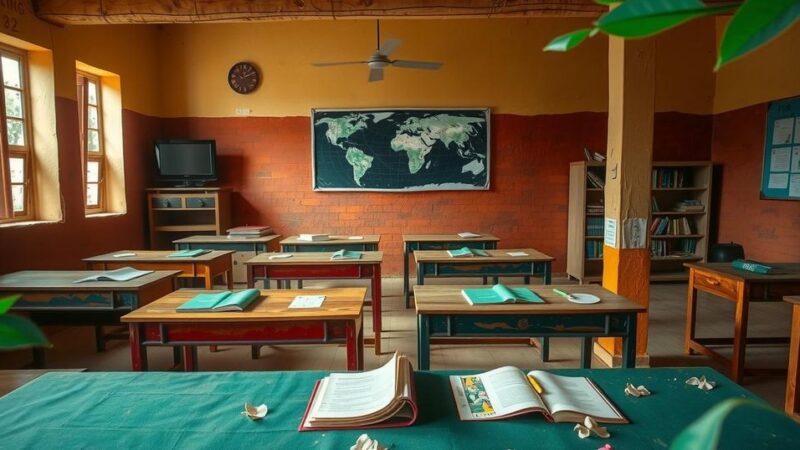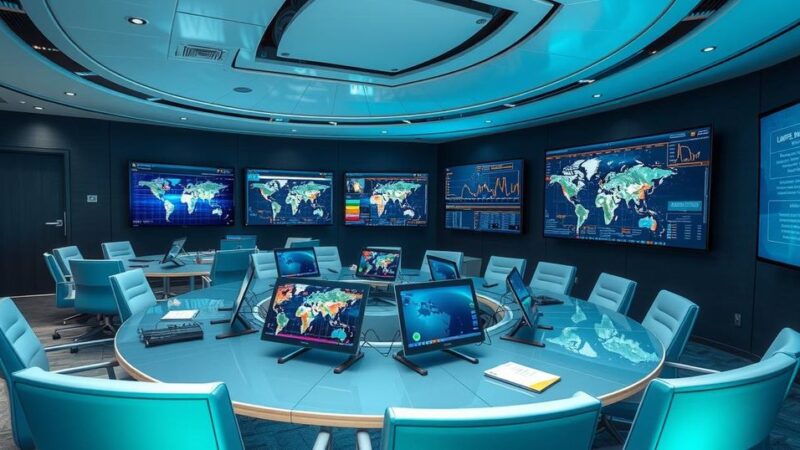The upcoming COP29 will address the New Collective Quantified Goal for climate finance, aiming for at least $300 billion per year. Although the $100 billion target was met, developed countries and emerging economies remain at an impasse over financial responsibilities. Multilateral Development Banks (MDBs) occupy a critical role in mobilizing resources, with the capacity to leverage their funding significantly. A strategic focus on both mitigation and adaptation financing is essential to support the most vulnerable nations effectively.
In light of the pressing climate crisis, the role of Multilateral Development Banks (MDBs) in mobilizing increased climate finance has garnered significant attention, particularly as the world approaches the United Nations Climate Change Conference (COP29). Despite achieving the 2015 Paris Agreement target of mobilizing $100 billion for climate initiatives by 2022, the funding remains insufficient against the projected needs of developing countries—estimated to reach $1.1 trillion annually by 2025 and $1.8 trillion by 2030. The upcoming discussions at COP29 will center on negotiating a New Collective Quantified Goal (NCQG) for climate finance, aiming for at least a $300 billion public finance target. The core contention of these negotiations hinges on who will shoulder the financial burden. Developed nations argue for contributions from emerging economies, while these countries insist upon the responsibility of developed nations to provide adequate support based on the principles established in the Paris Agreement. In this context, MDBs, with their unique ability to leverage capital via AAA credit ratings, are poised to play a pivotal role in breaking this impasse. They currently account for approximately half of the required funding, utilizing their capital to acquire low-cost financing and thereby magnifying their impact on climate projects. The potential for MDBs to significantly enhance climate finance commitments is substantial. For instance, if developed countries contribute $20 billion annually to MDBs, these banks can mobilize approximately $292 billion for climate efforts through leveraging and blending financing with the private sector. This funding model emphasizes the need for a balanced focus on both mitigation and adaptation priorities, particularly for the most vulnerable nations, including Least Developed Countries (LDCs) and Small Island Developing States (SIDS). For MDBs to effectively redirect resources towards adaptation, explicit targets must be set to ensure equitable funding distribution between mitigation and adaptation initiatives. Furthermore, addressing loss and damage financing poses its own challenges, as MDBs are more traditionally aligned with concessional financing for adaptation and mitigation rather than immediate grants for loss recovery. Nevertheless, the engagement of MDBs through innovative diplomatic efforts can serve to bridge the gap between available finance and the pressing needs identified at the COP meetings. The UN Framework Convention on Climate Change (UNFCCC) has a key function in signaling to developed nations the necessity of committing to enhanced climate finance targets. By incorporating mechanisms for low-cost long-term financing within the NCQG framework, the UNFCCC can provide an inclusive strategy that encourages MDB participation without igniting contention between developed and developing nations over financial responsibilities. This creates a pathway for MDBs to leverage their distinct capabilities to provide sustainable finance effectively.
The discussions surrounding climate finance have intensified, especially after the establishment of the Paris Agreement in 2015, which set a target to mobilize $100 billion annually for climate efforts in developing countries. As climate impacts escalate, the demand for financial resources has surged, with projections indicating that developing nations will require approximately $1.1 trillion each year starting in 2025. In anticipation of COP29, a critical negotiation point will be the New Collective Quantified Goal, aimed at increasing climate finance commitments to meet growing needs.
In conclusion, the involvement of Multilateral Development Banks is crucial in addressing the stalemate in climate finance negotiations. Their capacity to leverage funding can significantly augment climate finance to developing nations, potentially reaching the ambitious targets set forth by COP29. However, a concerted effort is needed to ensure that finance is equitably distributed between mitigation and adaptation, particularly for the most vulnerable nations. An effective framework, stemming from the UNFCCC, can facilitate increased support for MDBs and ultimately lead to measurable progress in combatting climate change.
Original Source: theglobalobservatory.org






